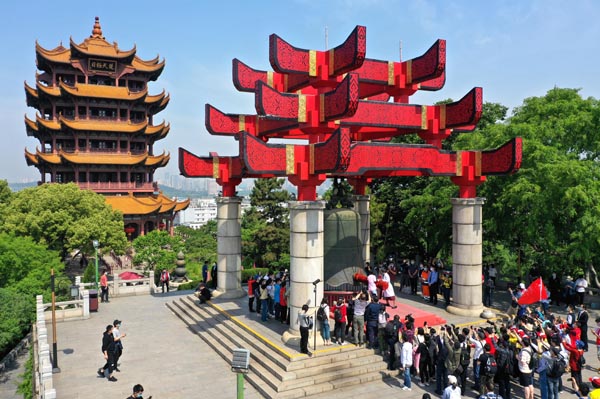 |
|
Wuhan's landmark Yellow Crane Tower reopens to the public on April 29. [PHOTO PROVIDED TO CHINA DAILY] |
With tourism still bouncing back from the impact of the COVID-19 pandemic, industry players continue to innovate and reinvent themselves to attract travelers.
As the year draws to a close and the industry is yet to make a full recovery, we look back on major tourism stories of the year, marking a tumultuous period of ups and downs.
Cruise quarantine
In February, 3,711 people were quarantined aboard cruise ship Diamond Princess in Yokohama, Japan, after a man who disembarked in Hong Kong tested positive for the coronavirus. This led to a mass cancellation of cruise trips, marking the beginning of a global tourism recession.
Consumption incentives
In March, the Nanjing government offered coupons worth 318 million yuan ($48.5 million) to increase the purchasing power of locals and boost recovery of the service sector. Later that month, Hangzhou issued coupons worth 1.68 billion yuan. Other cities across the country soon followed suit.
Virtual tourism
Major scenic spots around the globe began offering virtual travel experiences for people cooped up at home in March. Liang Jianzhang, chairman and cofounder of Trip.com started a wave of tourism promotion through livestreaming, selling 8,000 nights of hotel stays in 1 minute and 41 sets of "hotel+ scenic spot tickets" per second. Potala Palace in the Tibet autonomous region, the Palace of Versailles in France, and the British Museum also launched live online tours.
Labor Day recovery
China's tourism saw strong recovery during the May Day holiday. With epidemic control measures in place, the tourism market recovered to 50 percent of the level during the same period last year, according to the Ministry of Culture and Tourism. There was a total of 115 million domestic tourists during the holiday, generating a revenue of 47.56 billion yuan. A total of nine provinces, including Guangdong and Fujian, saw tourist numbers exceed 10 million each. Tourism revenue exceed 10 billion yuan in Guangdong, Hunan and Jiangxi provinces, respectively. Scenic spots across the country limited visitor numbers to no more than 30 percent of their maximum capacity during the holiday.